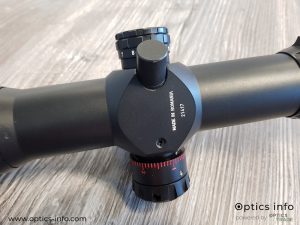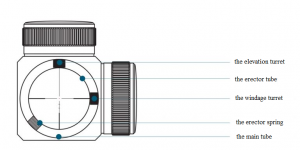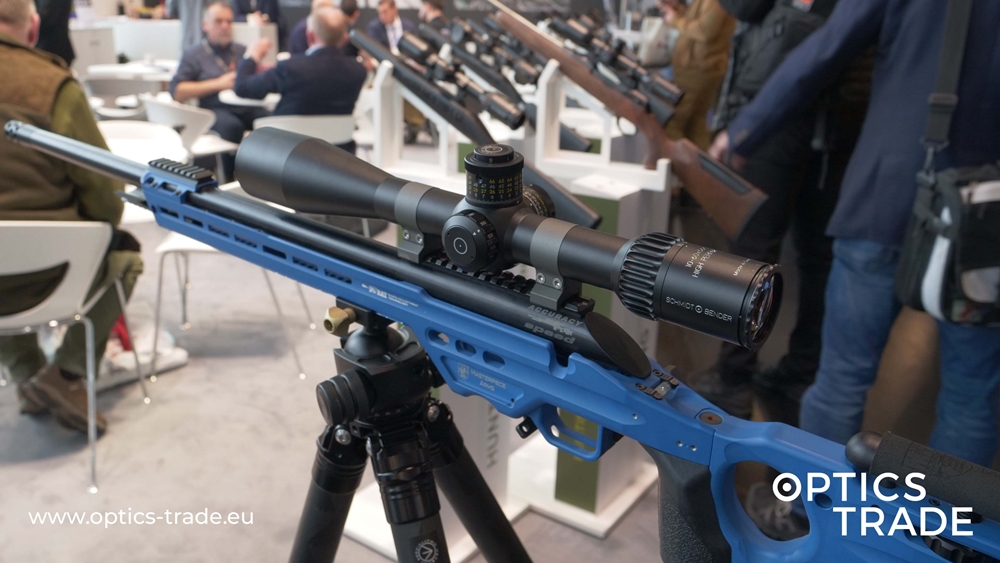Introduction
All the contemporary riflescopes are equipped with an elevation turret and a windage turret. The former is used for a vertical adjustment of the riflescopes, while the latter is used for horizontal adjustment. To execute an accurate shot, the center of the riflescope’s reticle has to be perfectly aligned with the trajectory of the bullet at a certain distance. The turrets that the user rotates are basically screw heads that press on the erector tube which is located within the riflescope’s chassis. The erector tube contains all the optical lenses of the riflescope.
The erector tube and the erector spring
The rear part of the erector tube is connected to the outer tube with a two-axis gimbal, a pivoting frame. The erector tube does not rotate but can be moved upward and downward because of the erector spring.


The erector spring inside the riflescope presses the erector tube against the bottom parts of the windage and elevation turrets. If we turn the turrets inward, the erector tube is pushed against the spring; if we turn the turrets outward, the spring pushes the erector tube toward the bottom parts of the turrets.

Pointing the flashlight’s beam into the objective of the riflescope can help us understand how it is built. The erector tube is always visible. Sometimes, even the spring is visible with the right turret settings, and the bottom parts of the turrets as well.


In some riflescopes, several flat erector springs are used for erector tube positioning. A few have the erector spring visible from the outside – this compartment usually looks like a small knob and is located at the 7 o’clock position, opposite the elevation and windage turrets. Some modern riflescopes, like the ones from Swarovski, have the coil springs in the rear end of the tube. With this technique, more space is obtained in the middle of the tube, which allows the installation of bigger lenses.

After several years of use, the erector spring weakens. This affects the reliability of the riflescope. It all depends on the quality of the riflescope – more expensive, high-quality riflescopes are equipped with stronger and more durable erector springs which don’t wear off as quickly as those installed in cheap riflescopes.
Conclusion
Modern riflescopes are much more advanced than the old ones, both optically and mechanically. Nevertheless, it is useful to know how the mechanics work – only by understanding the riflescope’s mechanics can we fully exploit its features.











It really interests me to read such articles, thanks for sharing. Blogs like yours really helps me learn more day by day.